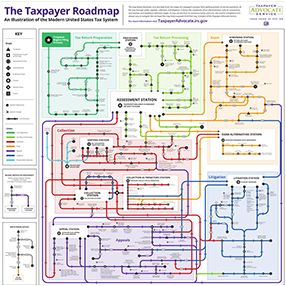How Tax Reform Could Affect Taxpayers with Able Accounts

Last year’s tax reform bill made a number of significant changes to the tax code. One of these changes involves ABLE accounts, as people with disabilities are now permitted to place more funds into these types of accounts and may also be able to qualify for the Saver’s Credit for low-income workers. If you are considering opening an ABLE account and have questions about how these changes will affect your own rights and obligations, you should consider speaking with an experienced tax and IRS attorney who can address your concerns.
What are ABLE Accounts?
In 2014, Congress passed the Achieving a Better Life Experience Act (ABLE), which allows the family members of people with disabilities to create a tax-advantaged account to pay for tax-free qualifying expenses, including transportation, housing, assistive technology, medical treatment, and education. Before the passage of this law, those with disabilities who had more than $2,000 in savings were not considered eligible for government benefits like Medicaid. The new law changed this by allowing those with ABLE accounts to avoid being denied government benefits, as long as no more than $15,000 was placed in the account each year.
Recent Legal Changes
According to the Tax Cuts and Jobs Act, which was passed late last year, people with disabilities are now allowed to place more money in their ABLE accounts. In addition to the $15,000 a year that can be placed in ABLE accounts by relatives and friends, designated beneficiaries are now also allowed to contribute part or all of what they make through employment into their accounts, unless their employer also contributes to a workplace retirement plan on their behalf. Further, the amount that can be contributed by a disabled employee is limited to the poverty line amount for a single person household, which as of 2018, is $12,140 a year.
In addition to this major change, ABLE account beneficiaries may now qualify for the Saver’s Credit, which is made available to low and moderate-income workers and can help reduce their tax debt or increase their refunds. Taxpayers can qualify for this tax credit if they made eligible contributions to a retirement plan or IRA during the tax year, although only those who are over the age of 18 years old, are not full-time students, and are not claimed as dependents on someone else’s return are eligible for this credit. Generally, the amount of the credit is equal to 50, 20, or ten percent of the qualifying taxpayer’s retirement plan contributions up to $2,000. However, under the recently enacted changes to the tax code, ABLE account holders can now qualify for the Saver’s Credit if they made contributions during the year not to a retirement fund, but to their ABLE account. The $2,000 limit remains in effect.
Call Today to Learn More About Creating an ABLE Account
If you or a loved one qualify for or currently have an ABLE account, the newly enacted tax law could significantly affect how much you can contribute to the account each year. To speak with a dedicated Florida tax and IRS attorney about these changes, please call Ronald Cutler, P.A. at 386-490-9949 today for a free one-on-one consultation.
Resource:
money.usnews.com/money/personal-finance/articles/2017-01-11/what-to-know-before-opening-an-able-account



